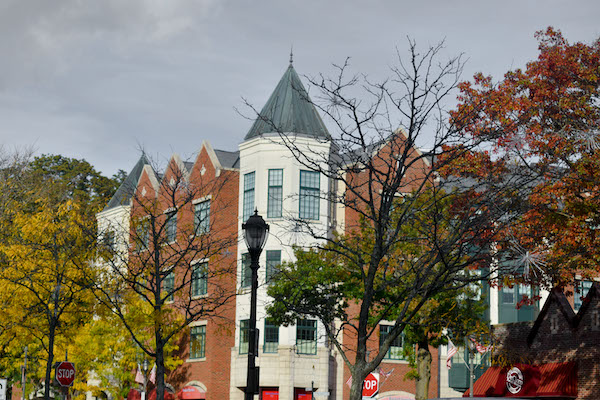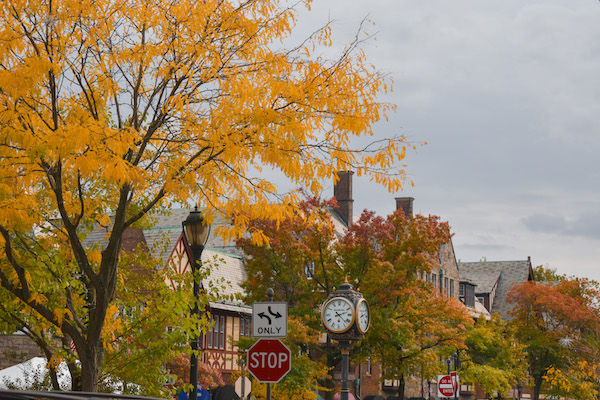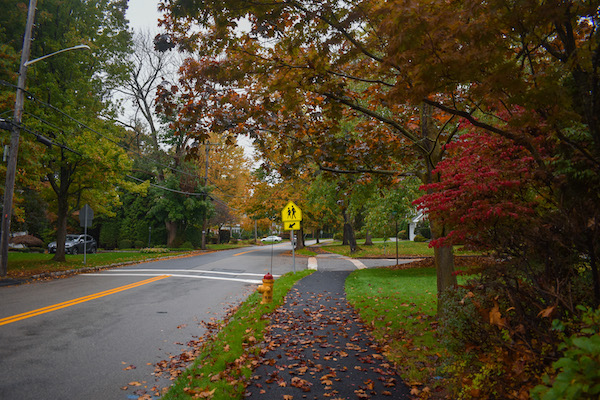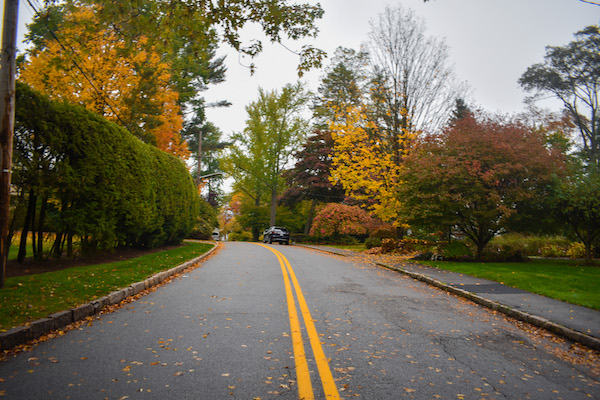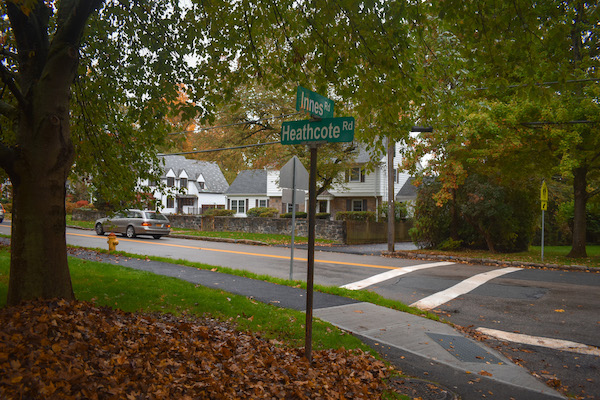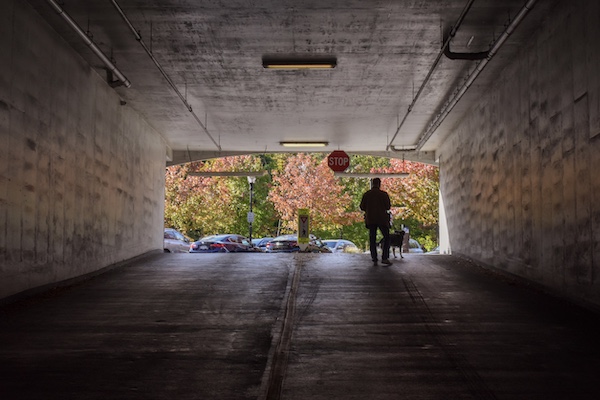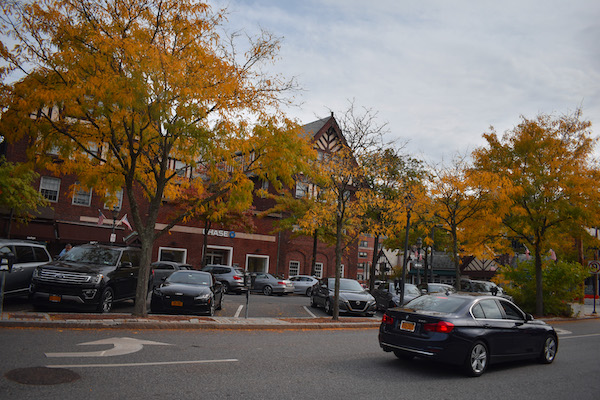Surveys and Focus Groups Indicate that Stakeholders are at Odds About How to Move Forward
- Details
- Written by Joanne Wallenstein
- Category: The Goods
 In the past few weeks the district conducted focus groups and sent out surveys to assess community views on the hybrid learning model in the Scarsdale Schools. In depth results of this research is available online. At the November 2 meeting of the Board of Education, Assistant Superintendent Edgar McIntosh reviewed the top line results from the surveys while Superintendent Thomas Hagerman gave topline conclusions from the focus groups. The results mirrored comments the Board has heard from parents at recent meetings.
In the past few weeks the district conducted focus groups and sent out surveys to assess community views on the hybrid learning model in the Scarsdale Schools. In depth results of this research is available online. At the November 2 meeting of the Board of Education, Assistant Superintendent Edgar McIntosh reviewed the top line results from the surveys while Superintendent Thomas Hagerman gave topline conclusions from the focus groups. The results mirrored comments the Board has heard from parents at recent meetings.
Here’s a summary of the primary findings from the surveys. Click on the links for an indepth analysis.
Elementary school surveys revealed the following:
-73.5% of fourth and fifth grade students felt that they could learn well in the am/pm cohort model.
-A large majority of fourth and fifth graders said they could independently log on, find materials and stay organized.
-11% of fourth and fifth graders reported having difficulty staying focused during independent time.
-About 64% of parents of K-1 students reported that the children were having trouble signing on and working independently.
Elementary School Teachers
81.9% reported that teaching smaller groups allowed them to monitor student progress. They feel that daily contact and small cohorts are benefits of the current elementary school model. However, teachers cited the challenge of limited time with students and are missing the opportunity to do hands on, collaborative and group work. They found planning time on Wednesdays to be valuable and that planning time with colleagues was essential and had a positive impact on teaching. Last, 55% of teachers believe their input has had little impact on district decision-making.
Elementary School Parents
The highest number asked for more instructional time, in person. Second, they expressed their appreciation for the teachers and noted communications challenges.
Middle School surveys surveys showed:
-The majority of students find that work load was just right
-Few students are using faculty office hours. Instead they seek clarification through email.
-Parents feel comfortable with safety measures
-Movement of teachers leads to a loss of instructional time, due to the technology set up that is required.
-The majority of parents and students believe that students benefit more from synchronous rather than asynchronous activities. Students can have their questions answered in real time and feel more connected.
High School surveys surveys revealed the following:
-Students said they are doing the same or more work on the mornings they are home rather than in school. However, 62% of parents disagree.
-Students are using the tutorial time on Wednesdays, and doing the same or more work on Wednesdays. However only 54% of parents agree that the same amount of work is being done.
-2/3 of students say they are as busy at home as they are in school, and believe they are busier this year than in a typical year.
-Only ¼ agree that students feel connected to their teachers and colleagues.
-Half of the students agree that they know how their grades will be determined.
-Only 5% of students and 7% of the faculty believe that synchronous at home learning should replace asynchronous work, while 34% of the parents are in favor of cross cohort live-streaming.
McIntosh said that district will fully analyze the data to see what steps they can take.
Dr. Hagerman reviewed the outcome of 39 focus groups conducted by the Tri State Consortium. He reported that 400 participants including parents, teachers, students, board of ed members and administrators had participated.
He said that questions focused on communications, what practices have been effective and how can they be improved and teaching and learning in the hybrid model.
Hagerman provided a summary of 12 broad points of feedback:
-Most support the safety protocols and feel that they are working well.
-Participants expressed an appreciation for how the district is adapting.
-Everyone believes in person instruction is going well under the current conditions.
-People want more in person instruction, some within the hybrid model and some calling for a full instructional model.
-Parents have less confidence about what is happening when children are not in school
-Concerns were expressed about the quality of asynchronous learning experiences.
-Special education and virtual only families feel marginalized by the district’s plans
-Parents believe that district communications have been overwhelming in volume and length.
-Parents distrust district communications because they don’t explain the how and why decisions are being made.
-While the majority of parents are advocating for more in person instruction, the preponderance of teachers are concerned about bringing more children back for longer periods of time in school for health and safety reasons.
-Teachers believe district communication has been top down in nature and does not include feedback from teachers. They perceive that decisions are made in a reactive nature, often in response to parent pressure.
-The Wednesday schedule has produced widely different perspectives. Parents feel that Wednesdays are a waste of time and students find the schedule to be confusing, while teachers need the time for planning and preparation.
-The decision to experiment with cross cohort streaming lacked meaningful teacher participation. Communication about it was unclear and the technology was not in place to deliver a high quality experience.
-Participants called for improved emphasis on social and emotional health for all stakeholders. Stressors includes students’ need for more social interaction, parents fears about their children falling behind and teachers feeling the pressure of totally overhauling their curriculum without adequate time and training.
In conclusion, Dr. Hagerman said,“ teachers, parents and students appear to be at odds about how to move forward.”
Fall for Scarsdale
- Details
- Written by Olivia Halligan
- Category: The Goods
 One silver lining of the pandemic has been the gift of time -- time to take a walk, appreciate nature and notice our surroundings. As the leaves turn this year, we're seeing beautiful vistas of yellow, orange, pink and red. Scarsdale High School junior Olivia Halligan shared these stunning fall photos of the Village we are fortunate to call home.
One silver lining of the pandemic has been the gift of time -- time to take a walk, appreciate nature and notice our surroundings. As the leaves turn this year, we're seeing beautiful vistas of yellow, orange, pink and red. Scarsdale High School junior Olivia Halligan shared these stunning fall photos of the Village we are fortunate to call home.
Scarsdale Forum Proposes Formation of a Permanent Committee to Facilitate Communication Between the School District and Stakeholders
- Details
- Written by Joanne Wallenstein
- Category: The Goods
 The Scarsdale Forum is proposing the formation of a permanent advisory committee to improve communications among stakeholders in the Scarsdale learning community including the Board of Education, the district administration, educators, students, parents and community members.
The Scarsdale Forum is proposing the formation of a permanent advisory committee to improve communications among stakeholders in the Scarsdale learning community including the Board of Education, the district administration, educators, students, parents and community members.
Citing the need to improve communications in light of the COVID-19 pandemic, the group is calling for “transparent, substantive, timely and ongoing communications between the school district, Board of Education and community stakeholders. The purpose of the Scarsdale Community Communications Committee (SCCC) would be to “promote synergistic communication and participation among and between educators, parents, students, the wider Scarsdale community, the BOE and the District, among other stakeholders in the Scarsdale learning community and educational hierarchy.
The Education Committee proposal notes that during the school closures and the restart process, many stakeholders wanted to express themselves and become engaged in the process, and this committee could facilitate that engagement. The proposal says, “Many stakeholders desired more interactive opportunities to express their thoughts over remote learning experiences. In addition, there appeared to be heightened interest among stakeholders in becoming more involved in the development of the Restart Plan.”
The proposal envisions that the SCCC would be an active committee, ready to become engaged whenever the need arises. According to the proposal, “This proposal envisions the SCCC as an active, vibrant committee, ready to become more or less engaged as events demand, both during periods when communication and participation strategies are necessary to support ongoing information sharing, as well as during the rare occasions when immediate action may become necessary. As current events have shown, an unexpected crisis may consist of power outages greater than several days, or a long-term situation such as a global pandemic that has the potential to exert a profound impact on the lives of stakeholders and the functionality of school operations.”
Barry Meiselman is the Chair of the Scarsdale Forum Education Committee that is proposing the formation of the SCCC. We asked him a few questions to learn more about the proposal:
Why is the education committee proposing the formation of the School Community Communications Committee now? What was the impetus?
The pandemic and community reaction to the Restart Plan seemed to indicate that there might have been better ways to engage a broader representation of stakeholders in both the Restart planning process and decision-making for the start of the upcoming school year. Stakeholders desired more constructive, interactive and inclusive opportunities to contribute to the planning, policy development and decision-making that formed the basis for the Restart Plan.
How will members of the SCCC be selected?
The report cites a toolbox developed at MIT that identifies the roles that should be assumed by those who participate in an SCCC-like committee, as well as procedures to ensure appropriate selection of committee members from the stakeholder community. Certain decisions about the SCCC will need to be made when the committee develops its mission and goals. The Education Committee is confident that these details can be worked out in a reasonable fashion, utilizing the framework provided in the report.
In the discussions about the restart plan this summer, the community was not able to hear the perspective of the teachers until very late in the game. Will teachers be included on the committee?
Yes, educators are a key stakeholder group. The sense gleaned from hearing STA leaders speak at a BOE meeting, as well as public comments from the Board and District, is that there was a great deal of collaborative work involving educators in developing the Restart Plan. Perhaps their roles were not as publicized until later in the process. The proposed SCCC would have representatives from major stakeholder groups in the “design thinking” room together, so that everyone could benefit by understanding the rationale behind potentially contentious views. The anticipated result of these discussions would be a plan developed after reaching a reasonable consensus among all stakeholder groups.
The Board has traditionally held all negotiations with teachers in private sessions, which prevents transparency with the community. How will this committee facilitate increased transparency while respecting this tradition?
We all recognize the sensitivity involved in negotiations between the STA and the District, and the constraints that might place on what’s doable despite what appears to be reasonable expectations by the community. There’s no simple answer, but at the end of the day, it might have helped stakeholders to have a better understanding of the role and perspectives of educators at the outset of the Restart Plan development process.
In times of crisis, the school administration and BOE have limited time to meet their own obligations. Do you think it’s reasonable to ask them to participate in another committee at the same time?
Effective participation and communication strategies must be a high priority for the District and BOE, during periods when such strategies are necessary to support ongoing information sharing, as well as during the crisis situation we had last spring when schools were initially closed. These strategies are just as important now, as the pandemic has turned into a long-term situation. The Education Committee believes they are key components for the successful rollout of the District’s overall Strategic Plan and its Information Technology Plan, as well as other initiatives that are being considered. That is why the SCCC is viewed as a permanent and neutral entity, working in an advisory capacity with the District, BOE and community.
To some degree, it is the role of the Board of Education to represent the wider community and to present these views to the administration. Is this process working? If not, why?
Indeed, the BOE is a group of individuals elected by the community for representation. The SCCC is a forward-thinking proposal that provides a workable platform to enable a diverse group of stakeholders to maintain an ongoing, relevant, interactive and innovative dialogue as a vital adjunct to help inform successful District planning, policy development, decision-making and operations. It is very much a collaborative venture among stakeholders, which includes the BOE, District, educators, students, parents and community members who may not have children attending district schools at this time.
Have you submitted your proposal to the school administration and Board of Education? What was their response?
Both the District and BOE have the report. I will be presenting the report at the BOE meeting on October 19th and then we will have a better idea of their reaction. The Education Committee is optimistic that the response will be positive based on public statements made by District leadership and BOE members that appear to support the conceptual basis for creating an SCCC. It was also gratifying to learn that the District partially used the same research cited by the Education Committee’s report to develop the District’s own set of beliefs that formed the basis for curriculum decisions for the 2020/2021 school year. Finally, another positive sign is the BOE/District’s Community Engagement Committee, created towards the end of 2019, and the work it will be doing to update the District’s Communications Plan, originally developed several years ago.
STA President Urges Community to Maintain a Spirit of Trust
- Details
- Written by Joanne Wallenstein
- Category: The Goods
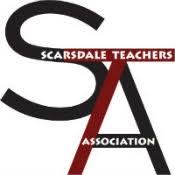 These comments were made by Scarsdale Teachers’ Association President David Wixted at the Board of Education meeting on October 19, 2020.
These comments were made by Scarsdale Teachers’ Association President David Wixted at the Board of Education meeting on October 19, 2020.
Thank you for this opportunity to speak. When I came before the Board in August, I said that STA officers do not typically make these kinds of public statements. The fact that I find myself here again two months later says something about the extraordinary times we are living in-- times driven by the ever-increasing pace in which demands arise and decisions must be made. Times that bring tremendous stress and worry to us all.
I will begin by asserting that seven weeks into the school year, the educators of this district are doing everything possible to provide excellent educational experiences to students in this time of pandemic. Tonight I hope to give voice to these remarkable efforts but I know my words will not provide their full measure. Much of what I am about to say is known to the Board and district administrators. Still, given the recent comments at Board meetings, the time requires that I step forward and speak about these realities to a broader audience.
To begin with the obvious: this school year is unfolding in a time of pandemic. Any reading of the news makes clear we will again confront a surge of the virus’s spread. Indeed, the events of the past weekend demonstrates how close the threat of the virus remains. Rightly, this district has asserted as a priority the health and safety of all working within its schools, students and educators alike. Over the past decade, this priority has been the source of consuming discussion at Board meetings. Since the outbreak of the virus, these concerns have become more pressing, leading to instructional modalities in line with guidance from authorities in Albany. Since March, teachers and administrators alike have worked to find their footing in this reality, and while we stumbled at times on the unfamiliar terrain, we became increasingly more assured at providing remote learning experiences to students.
Then, with an eye on the coming school year, and through ongoing deliberation among the professional educators collaborating with stakeholder groups, over the summer the district devised a series of plans for school restart. These discussions unfolded while we awaited directives from Albany. These deliberations were challenging and contentious because priorities were often in conflict. Over the summer, the STA, concerned with the well-being of students and faculty, argued for a commitment to remote learning. We sought to take what we learned from the spring and apply it to the work of the coming school year. Administrators and other stakeholders cited guidance from the State favoring in-person instruction. The argument was that through the cohorting of students, through strict adherence to guidelines including social distancing and the wearing of masks, and through a commitment to professional development and common planning time, schools could be reopened in a way that provided a reasonable degree of safety while also advancing the education of students. This led to the adoption of the hybrid models currently in place.
Once these models became defined, this district’s faculty has been and remains committed to answering the question of how to make instruction come alive in the minds of students. Let there be no doubt about this. The educators of this school district have dedicated themselves to planning meaningful and coherent learning experiences within unfamiliar modalities. Teachers currently find themselves living again what they remember as first year teachers striving to make instructional connections with students. Yet, in spite of laboring in modes that are unfamiliar, the work teachers are creating is deep, rich, and significantly advances students through curricula. Some may point to seeming limitations arising from the structure of school schedules required by the pandemic. However, they should know that teachers are always striving to provide students with learning that leverages the live instruction they receive with the work they do asynchronously. Every day, teachers teach the students in the room with them. Every day, they remotely teach the students whose families have decided to keep their children home. Every day, they plan learning for students who are off cohort. Every day, teachers have answered the demands arising from hybrid learning models, and they are making it work. And it is worth mentioning that the students have been wonderfully responsive.
These efforts are demanding, hugely time-consuming, and require the sustained commitment of educators working in service of students. But this is who Scarsdale educators are. They are devoting hours upon hours restructuring lessons, creating new ones, deepening their abilities with technology, and seeking new ways to connect to students when they are away from the classroom. Know that everything about teaching last spring and now this year is more complicated. Everything we do takes more time. These efforts require sacrifices teachers are willing to make because of their commitment to students. But to be clear, in this unfamiliar and challenging modality, teachers are sacrificing their well-being and commitments within their personal lives so as to provide the education their students deserve-- education that will prepare them for the work to come-- education that is at least the equal to that provided by any other school district.
But they also openly worry if their efforts are sustainable.
Since the start of the pandemic in March, the teachers of the school district have tuned into the broadcasts of Board meetings. They know in these exceptional times, listening to the tenor of the community’s conversations with the Board is important. In recent weeks, teachers, especially at the secondary level, have heard increasing criticisms for what is being provided along with calls for the ‘live streaming’ of classes. They have heard speakers defining the education offered by Scarsdale teachers as being ‘less than’ that found at other school districts-- that teacher efforts can be defined through classroom hour counts and opportunities for students to live stream. There is a truth that most area school districts are allowing off-cohort students into the classroom. I recognize that in part because of this truth, the district feels compelled to follow suit. But I do not accept that such practice is superior to the asynchronous work teachers have been providing. And I mostly worry that the practice will place additional strain upon teachers now required to engage three audiences at once-- the students in the room, the students learning remotely, and the off cohort students. I worry that the practice of live streaming will diminish the educational experience everyone receives.
When I came to Scarsdale thirty years ago, I remember being struck by the degree to which the professional educators-- teachers and administrators-- were trusted to make the decisions about what is in the educational interest of students. There was faith that the instruction provided to students was grounded on sound pedagogical principles, and that we could be relied upon to provide the learning opportunities students needed. Over the years, at the heart of this extraordinary district has been this spirit of trust. I recognize that this spirit is not always easy to maintain and relies upon a continuous dialogue between the Board of Education and all those working in these schools. These impossible times make maintaining this trust even more complicated, but it is in such times that it is most needed. It begins with this recognition, that your district’s educators, an expansive word that includes teachers, school counselors and deans, librarians, nurses and therapists, psychologists, and all professional service providers, are doing everything they can to make this hybrid model work, and they are doing it at great personal expense. They have been disheartened and discouraged hearing voices questioning their labor, their intentions, their commitment to their students. And every time there is a change that requires something more, the thought becomes ‘what’s next?’ All of this can have the effect of distancing teachers from their work, of seeing these obligations simply as a job and not as their life’s calling.
This year is sure to bring challenges that will be best addressed by a dialogue that places the voices of educators, the ones who will be required to implement decisions, at the center. Together, knowing that there is appreciation for the work of teachers within the Board, among building and district administrators and from many in the community, we must continue to maintain the trust at the heart of this school district. Doing so is the best way to be true to our educational culture and to find ourselves intact when this pandemic eventually ends.
Dismayed Parents Hear Board and Administrator's Defense of Scarsdale Restart Plans
- Details
- Written by Ezra Lerner
- Category: The Goods
 Board member Carl Finger Posed Questions About the Curriculum.A group of agitated parents questioned both the school administration’s leadership and the Board of Education’s oversight at the October 5 meeting of the Scarsdale Board of Education. In order to make public comments, in person attendance was required, and a charged contingent of parents sat through a five hour meeting demanding to be heard and asking for answers. The issue was the Scarsdale school’s restart schedule which offers a minimum number of teaching hours and in person attendance for Scarsdale students.
Board member Carl Finger Posed Questions About the Curriculum.A group of agitated parents questioned both the school administration’s leadership and the Board of Education’s oversight at the October 5 meeting of the Scarsdale Board of Education. In order to make public comments, in person attendance was required, and a charged contingent of parents sat through a five hour meeting demanding to be heard and asking for answers. The issue was the Scarsdale school’s restart schedule which offers a minimum number of teaching hours and in person attendance for Scarsdale students.
Perhaps in an attempt to address over 61 emails from the community, many of which focused on frustration with the restart plans, Board President Pam Fuehrer opened the meeting with a statement about Scarsdale values and an avowal of support for Scarsdale’s faculty. She said, “our educators have a proven track record and have our earned our faith and trust… these teachers will rise to the occasion…. they ensure that Scarsdale schools are Scarsdale schools.”
Her reassurances were not enough to diffuse the dissent in the room. Even before the contentious public comments session, dissent broke out on the stage among board members. During the opening session Board Member Ron Schulhof attempted to read an opening statement but was stifled by Fuehrer who said that the Board had agreed to a protocol which only allowed for liaison reports, and recognition of students and faculty. She said, “it is not appropriate to express personal opinions.” Schulhof replied, “that runs afoul of open meeting laws.”
Tension abounded as the meeting proceeded with parents expressing dismay about Scarsdale’s reduced teaching hours in comparison to peer districts, lack of representation or pushback from the Board of Education and fear that Scarsdale students would fall behind after receiving as little as half of the regular curriculum.
Community member Roger Neustadt captured the sentiments of the audience when he implored the Board members and administrators on the stage of the high school auditorium to “take a good long look in the mirror,” for you, he claimed, are “the genesis of the anger in this community.”
Echoing complaints from the September 14 meeting, criticisms were levied about the amount of asynchronous learning. Resident Zachary Altschuler re-introduced the phrase “Netflix Wednesdays,” a prior bone of contention. He chastised the district for “continuing to set the bar too low” and claimed that “whether the board believed it or not,” the “community is experiencing a crisis of confidence in its educational leadership.”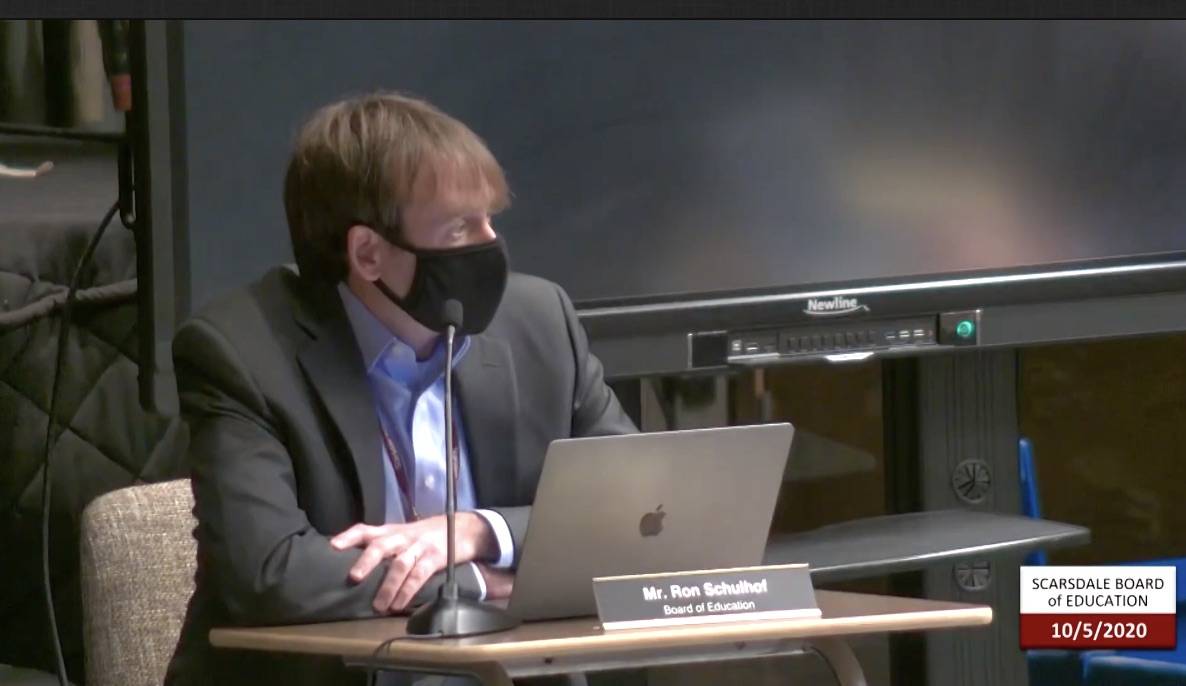 Board Member Ron Schulhof was barred from making a statement due to Board protocol.
Board Member Ron Schulhof was barred from making a statement due to Board protocol.
His frustration with the amount of asynchronous education was echoed by Stephanie Israel, who claimed that one of her children was using that time for a “Harry Potter marathon.” Parent Michelle Sterling went a step further, noting that “the oft-repeated answer [for why there is no education on Wednesdays] is so nonsensical that is almost insulting to our community that we keep being given it.” Anirudh Bansal balked at the district’s argument that Wednesdays were needed for planning, arguing that the district has had months to plan for the school restart.
Bansal also zeroed in on the curriculum cuts that the district was making, taking particular umbridge at a comment Assistant Superintendent Edgar Mcintosh made at an elementary school curricula forum, when he said the districts was “Marie Kondoing the curriculum” for each grade across the five schools. Paulina Schwartz, a resident and former math teacher, expressed similar concern about said cuts, saying “I know the [math] courses. You can’t do 50-60% and do the next year’s course or the course after” that. Framing these consternations most succinctly, perhaps, was Neustadt, who asked, “What about the junior who’s taking pre-calc, and will not cover the necessary material this year? How will they be ready for calculus as a senior, or will they just do half the curriculum?”
Concerns about asynchronous learning and the paring down of the curriculum spurred discussion about livestreaming in person classes for students at home. Israel, and parent Lisa Gans, raised concerns about the lack of a district-offered rationale for not livestreaming classes. Israel further claimed that livestreaming would decrease the amount of planning required, which could free up more time on Wednesday for further education. Bansal read the reason he had been given for a lack of livestreaming and proclaimed it unintelligible. Allison Abramson claimed that her daughter is jealous of the livestreamed classes that her other chid, who is being educated out-of-district, is receiving. Neustadt, for his part, asked “why is it possible for districts around the country to figure this out [...] but we can’t seem to get it together?” He also called sick students to zoom into classes even in a post-COVID world, so that illness does not force them to miss school as often.
Multiple parents also highlighted what they saw as the Board’s unwillingness, and inability, to work for district parents. “We are not your enemies,” said Neustadt, “but you’re treating us like that.” Abramson expressed an interest in being part of the restart committe and uncertainty about the committee’s staffing process. Parent Phillip Sanchez extolled the value of collaboration, citing his experience working for a mayor, a senator and a governor. He claimed that rather than collaborating the district was placing the teachers, students, and parents in opposition with one another. Debbie Hochberg put it more bluntly, arguing that “we [the residents, students, and teachers] trusted you, and I think we all feel betrayed.” In a similar vein, Israel, and resident Diane Gurden, called for the establishment of clear COVID-related reopening metrics. “You honestly shouldnt’ be allowed to leave this meeting,” said Israel, “until you fully explain to this community the metrics that the district will use to determine when our children can recieve a greater amount of live instruction.” At a second round of public comments, she took her comments even further, charging that the board was “going to erode the economic base of this town.” Said Israel, “You have no plan! And you need a plan!”
And yet, perhaps the most contentious topic was the total number of hours of instruction students were recieving. This was due, almost entirely, to a parent researched report that found that Scarsdale, when compared to peer school districts, ranked 20 out of 20 in total hours of instruction per week. The analysis was first mentioned during public comments by Gans who was particularly concerned with the 10 hours of synchronous instruction per week. “Our elementary schools are only in school for two hours a day,” said Gans. “Is two hours at the elementary level really the best that we could come up with?” For Gans, it was not, proclaiming that “for my fourth grader [...] two hours of instruction a day is not enough!”
Jeff Gelles echoed her sentiment, noting that “it is disturbing to hear [...] that Scarsdale is at the bottom of our peer group in the amount of synchronous learning.” He did concede, however, that there were challenges in evaluating the effectiveness, or lack thereof, of asynchronous learning. Israel concurred, expressing outrage at previous teacher sentiments she claims to have heard—specifically that the fewer hours of instruction received by Scarsdale students would be so awesome that the quality of those hours would make up for the abbreviated instructional hours. (See full statements from parents here.)
Restart Steering Commitee Update/Board Discussion
Upon the conclusion of public comments, the restart steering committee update and board discussion blended together as members and school administrators ping-ponged back and forth across different topics largely raised by their angry constituents.
Assistant Superintendent Eric Rauschenbach began by noting that the restart steering committee is trying to get focus group and survey feedback for the October 15th committee meeting. He also noted that the district has not had any COVID positive cases “within the district or school community.” He did mention, however, that five teachers/aides, one custodian, and two students are quarantining as a result of contact with COVID-positive people outside of the community. In that vein, he explained that schools do ask given students to go home each day to get tested based on “symptomology.” He noted that the steering committee has worked on updated closing policies, including different iterations for different closure lengths, as well as an updated “restart plan with the remote schedule for the elementary level.”
Rauschenbach also noted that the steering committe is updating the policy that governs whether students can “zoom into classes when a student is absent” for 1-3 days. Currently, he added, 80% of Scarsdale High School classes have “existing Zoom sessions for virtual only students. Any student who is absent in those classes can Zoom in when they are absent.” For the 20% of classes that don’t have existing Zoom sessions, Rauschenbach explained that students may zoom in on their third day of absence, so that teachers have time to adjust to the new paradigm. According to Rauschenbach, about 95% of the classes at the middle school have a virtual only student, so students can zoom into those classes on their first day of absence. Rauschenbach also mentioned that the district has not started discussing safety and learning protocols for next year.
Addressing this school year, he said the district is challenged by NY state requirements when it comes to putting more students in schools. He noted that even with low infection numbers in Scarsdale, COVID spikes across the state “are pieces that keep us [administrators] up at night.” Speaking directly to the concern about how this school year will affect future ones, Rauschenbach claimed that the teachers of future upper-level classes will keep in mind that some students may have educational gaps from the hybrid model, and will reassess what should be taught and what should be reviewed.
In response to concerns about COVID-related opening and closing metrics at large, Rauschenbach stressed the role that the state would have to play in those discussions. In adressing questions about metrics for individual closing decisions, Rauschenbach said those choices were situation-dependent, based on the type, extent, and place of exposure to the virus.
Rauschenbach also spoke directly to concerns about the lack of education on Wednesday, explaining the options offered by the upper-level schools. “At the high school from 12-3 [PM] there are tutorial office hours ,” said Rauschenbach, adding that there is also ”synchronous teaching early and late [on Wednesday], depending on the classes, in the middle school.”
Perhaps most notably, in reference to the October 15th reassessment date, Rauschenbach said that there would not be a complete list of changes produced at the end of that meeting. Rather, that would be a day focused around getting more feedback. Rauschenbach did speak to an ongoing process of formal and informal changes that had already been underway, and would continue going forward.
Assistant Superintendent Drew Patrick, answered parents commments saying that the district has been discussing ways “to engage with the home cohort.” Responding directly to questions on livestreaming, he contended that while some faculty see livestreaming as a way to deal with this problem, others feel livestreaming is a “path to destroying” small-group education, which is “what they are finding successful at this time.” To that end, Patrick said that the district administrators do not want to say they know better than the faculty regarding what the faculty need to teach effectively. Zeroing in on frustration expressed by parents about Wednesday, Patrick claimed Wednesdays were being used for teachers to meet in course-specific groups to review the past week, and look at the next two weeks, in order to make decisions.
In response to a discussion about potentially putting more students into classrooms, Patrick said “they granted very few” of the requests from the 20% of faculty to exclusively work remotely as faculty were assured that students and faculty would be six feet apart in classrooms. He made clear that this issue was not currently up for discussion, and to that end, the district is not talking at this point about making any modifications to the cohort system—a major tool being used to maintain social distancing. “Our goal,” said Patrick, “is to get as much in-person learning as we can possibly get [...] within the safety construct that we have at any given time.”
Referencing what could be discussed for potential change at the October 15th meeting, Patrick cited getting more 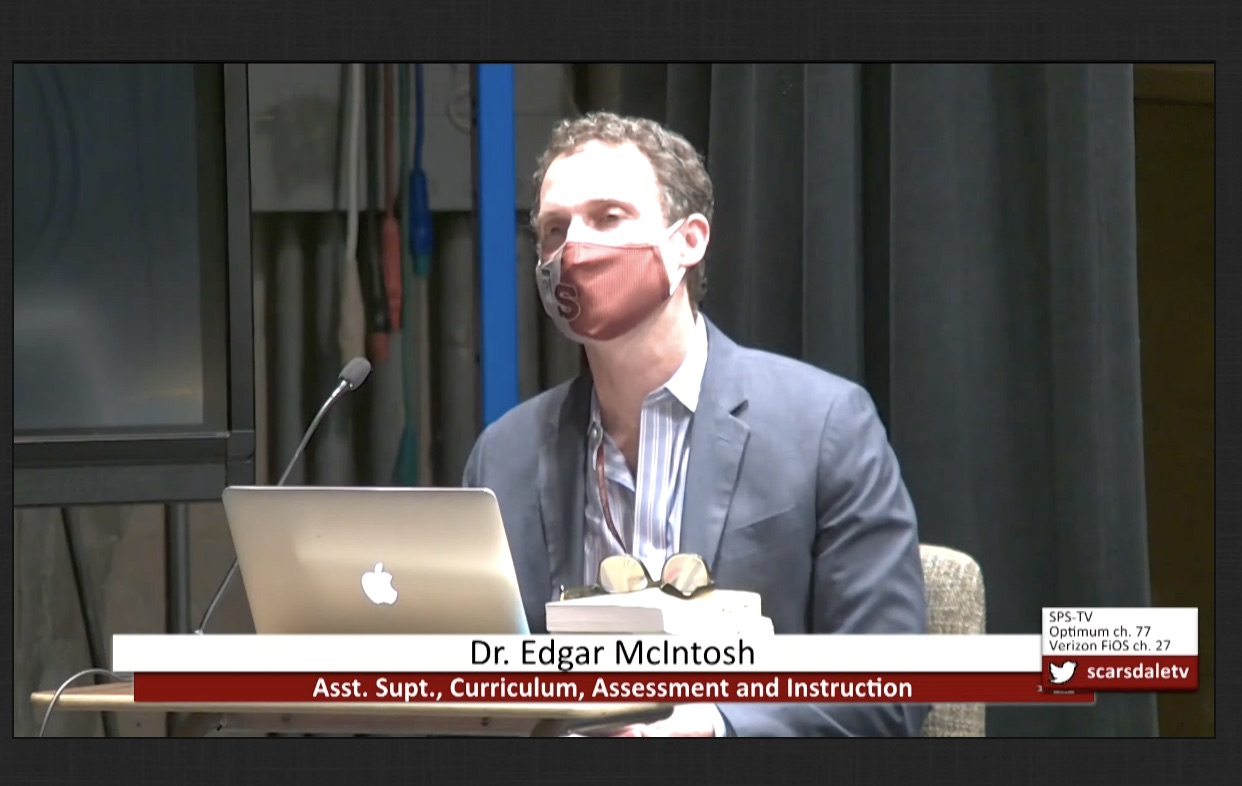 Assistant Superintendent Edgar McIntosh discussed district decision making.elementary grades into buildings in any extra space they have, for a longer or a partial day. (He did note later, however, that there was not a lot of space that could be used for education that was not already in use.) Patrick also said that the October 15th meeting could be used to discuss how to switch more of the middle and high school students from synchronous learning to in-person learning. He singled out middle school Wednesdays and high school afternoons as potential target areas. With that said, Patrick did claim, in congruence with Rauschenbach, that they have been making informal “modifications along the way” and also called for time and work to change the processes that are currently in place, even if these changes are in the students’ best interests “When I talk to teachers and gauge where they are,” said Patrick, “the overwhelming sentiment I get is ‘we are still figuring this out.’” As to why changes could not be made more quickly Patrick explained the lengthy collective bargaining procedure. He said, “We can’t fulfill our mission without our faculty. Hybrid models were developed over the summer… When we speak with the unions, we discuss our agreements by following a process that would need to be repeated to reach a new agreement. It’s hard to put a timeline on that.”
Assistant Superintendent Edgar McIntosh discussed district decision making.elementary grades into buildings in any extra space they have, for a longer or a partial day. (He did note later, however, that there was not a lot of space that could be used for education that was not already in use.) Patrick also said that the October 15th meeting could be used to discuss how to switch more of the middle and high school students from synchronous learning to in-person learning. He singled out middle school Wednesdays and high school afternoons as potential target areas. With that said, Patrick did claim, in congruence with Rauschenbach, that they have been making informal “modifications along the way” and also called for time and work to change the processes that are currently in place, even if these changes are in the students’ best interests “When I talk to teachers and gauge where they are,” said Patrick, “the overwhelming sentiment I get is ‘we are still figuring this out.’” As to why changes could not be made more quickly Patrick explained the lengthy collective bargaining procedure. He said, “We can’t fulfill our mission without our faculty. Hybrid models were developed over the summer… When we speak with the unions, we discuss our agreements by following a process that would need to be repeated to reach a new agreement. It’s hard to put a timeline on that.”
Assistant Superintendent Edgar McIntosh addressed concerns about curriculum cuts by saying that the steering committe was trying to zero in on the important things to teach. He claimed not to know where the 50-60% of curricula figure came from. He took responsibility for the Marie Kondo comment cited by Bansal, saying that he “completely lifted that” from a professor at the Harvard Graduate School of Education. That terminology, said Patrick, “was really more about emphasizing and developing the skills and concepts. And that’s teaching all the skills and concepts 100%.”
In response to concerns about the use of Wednesdays, Patrick explained that half of elementary school students have in person education. To that end, he teased “the launch of [...] our [the district’s] Wednesday Enrichment Block (W.E.B)” for the A/A.M. elementary school cohort, which will occur on Wednesday, October 7th. That will feature a visit from children’s author Micha Archer, who will answer questions from students, discuss her writing process, and offer a “tour of her workshop.” Patrick assured potentially worried parents that the PM cohort will get to talk to Micha Arther when they start their WEB session.
Addressing concerns about how science courses, biology in particular, could be taught with a partial curriculum, McIntosh stressed that the focus was on analyzing how systems interacted with each other. He gave the example of looking at certain parts of the body, saying that the goal would be students for to reapply that knowledge to other parts of the body. He also noted that he was not a scientist, and that “there may be questions on the [AP] test where you need to have memorized the noble gases in chemistry.”
Both Patrick and McIntosh listed outside resources that the district is currently relying on to assist in the restart effort, including Columbia Teacher’s College, a math organization called Metamorpheses, and “a framework for remote teaching” that “the Danielson Group has produced.”
School Superintendent Thomas Hagerman cast doubt on the value of the analysis comparing Scarsdale’s teaching hours to 20 peer school districts. Hagerman contended, that it didn’t account for school closures due to COVID outbreaks or exposure at other districts which he claimed was linked to a more agressive restart plans. “We have not been out of school,” said Hagerman, “and I think that that is an important metric for us to acknowledge as part of our success to date.” He also asserted that in school districts where kids were taught in person five days a week, classes were divided into two groups for space concerns, with one group receiving instruction from an aide or substitute. “We need to be very careful about looking at the instructional time and doing those kinds of comparisons with the core teachers,” said Hagerman. Offering an example, Superintendent Hagerman said he had spoken to a superintendent of a neighboring district on their first day of 100% in-person instruction. When he asked how it went, Hagerman said his colleague described a hellscape, and mentioned that they didn’t have teachers set to cover five sections the following day.
Board member Karen Ceske called for middle and high school curriculum adjustment meetings similar to the one offered for the elementary school curriculm. Assistant Superintendents Mcintosh and Rauschenbauch, citing the diverse nature of those curricula, called for that to be addressed at the open house and back to school meetings, and for questions and concerns to be directed to individual teachers and department chairs. At the end of the board meeting, however, Mcintosh said he would reach out to the middle and high school principals to see if meetings akin to the one offered for the elementary school curriculum could be offered at a wider scale.
In a similar vein, Board member Carl Finger called for emails outlining teacher curriculum decisions, saying that he would not be likely to search each teacher’s page. Later, Finger asked about prep for standardized tests, with McIntosh responding that he believes that students will be ready for end-of-year exams. Later on, McIntosh clarified that did not mean he felt everyone would ace end-of-year exams. Finger, claiming to speak on behalf of the parents, further said he understood why parents might be concerned that “there’s not enough instructional time and we’re not gonna get to the endzone by the end of the year.” He called for more in school time and the integration of live-streamed classes.
By far, the board member who advocated most ferociously on behalf of the parents was Ron Schulhof. He expressed sympathy with parents who were frustrated about their kids being home. He said, “We are already 10% through the school year …. having teenagers with too much time on their hands is not a recipe for positive, constructive behavior, en masse.” Schulhof also stressed the need for content to be taught as well as skills. He asked, “How can pre-calc can be taught in two mornings a week in high school?” McIntosh responded by stressing the importance of prioritization and suggesting students could make up at least some of that time with teacher office hours. Rauschenbach also countered that it was not just two mornings a week, noting that each class in the high school is meeting three times a week, in addition to assigned asynchronous work.
Schulhof also expressed concern about the October 15th reassessment date, given that there was a board meeting only four days later. Rauschenbach responded to him by saying that they likely would not be ready to fully discuss any proposed changes by the date of that board meeting. This prompted mocking laughter from the audience.
In perhaps his most successful effort of the night, Schulhof was able to get the board to agree to have the restart committe issue public memos recapping their meetings. These will be different than the private memos that the board currently receives from the restart committe, which supposedly contain privileged information.
While Board President Fuehrer did ask a few questions of school administrators related to parent concerns, she appeared most concerned with order and disorder at the meeting. She chastised audience members for jeering at the board during their discussion period. Most notable, perhaps, were her remarks to Schulhof who was seeking a commitment to a plan for implementing more teaching hours. Fuehrer said, “We can’t say to anyone we’re going to have more students in the schools in two weeks … we don’t know what’s going on. We can just say what we’re doing everyday, which is examining the current situation and how it’s working.”
Watch the meeting video here. The next public board meeting is October 19th.















